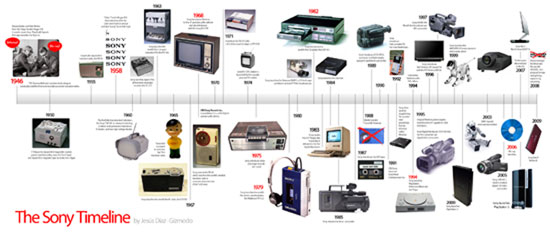History of Video Technology
Video production technology has evolved over many decades. "In the beginning film was the only method of recording motion pictures and early television. In the late 1950s the only way to edit the material was to physically splice it using a razor blade. One company, Ampex, developed a device called the splicing block. It consisted of a cutting blade mounted across the guide while the user viewed the splice point through a microscope." This was how the initial linear editing process happened. Later, with tape media, multiple video tape recorders (VTRs) were used to cue intended shots and record the content to a master tape." Presently, non-linear editing has taken the place of splicing film by hand using computers with specialized software to do the work.
Wallace, Heather. "History on Digital Nonlinear Editing." LORI SHYBA & SUNDIAL MEDIA. Web. 22 Nov. 2011.http://www.sundialmedia.com/sait/articles/found_a/heat_f.htm
The following is a comical example of the evolution of non-linear editing featuring Apple's new Final Cut Pro X. It was created by the post-production team responsible for editing Conan on TBS.
CONAN - Final Cut Pro X from Dan Dome on Vimeo.
The following is a brief history of Sony products, an invention leader in its field.
"In 1946, Masaru lbuka and Akio Morita form the Tokyo Tsushin Kogyo K.K in a radio repair shop. They build Japan's first tape recorder: the Type-G. In 1950, TTK launched Japan's first magnetite-coated, paper-based recording tape, the iSoni-Tapei, and Japan's first magnetic tape recorder, the G-Type. In 1963, Sony launched the world's first compact transistor VTR, the PV-100. In 1975, Sony introduced Beta video tape recording. In 1980, Sony introduced the Betacam/BVW-1, a 1/2-inch tape combined camera/VTR for broadcast use. In 1985, Sony released the 8mm camcorder. In 1987, Sony introduced the DAT tape. In 1989, Sony developed a smaller, lightweight, 8mm camcorder called the Handycam. In 1995, Sony's Digital Handycam DCR-VX1000 was the first consumer-use digital video camcorder available on the market. In 1997, Sony's HDW-700 became the world's first broadcast-use HD camcorder. In 2005, the HDR-HC1, the world's smallest digital HD video camcorder, was created. Most recently, in 2006, Blu-ray launches, giving the public yet a new distribution platform for content."
Source:
Lee, Odelia, and Andrea Wang. The Sony Timeline Birth, Rise and Decadence. Digital image. Gizmodo. Web. 21 Nov. 2011. http://gizmodo.com/5245132/sony-product-timeline-is-a-glorious-gadget-history-lesson
For a more detailed explanation regarding the history of non-linear editing, please watch our interview with Brad Noblitt.





